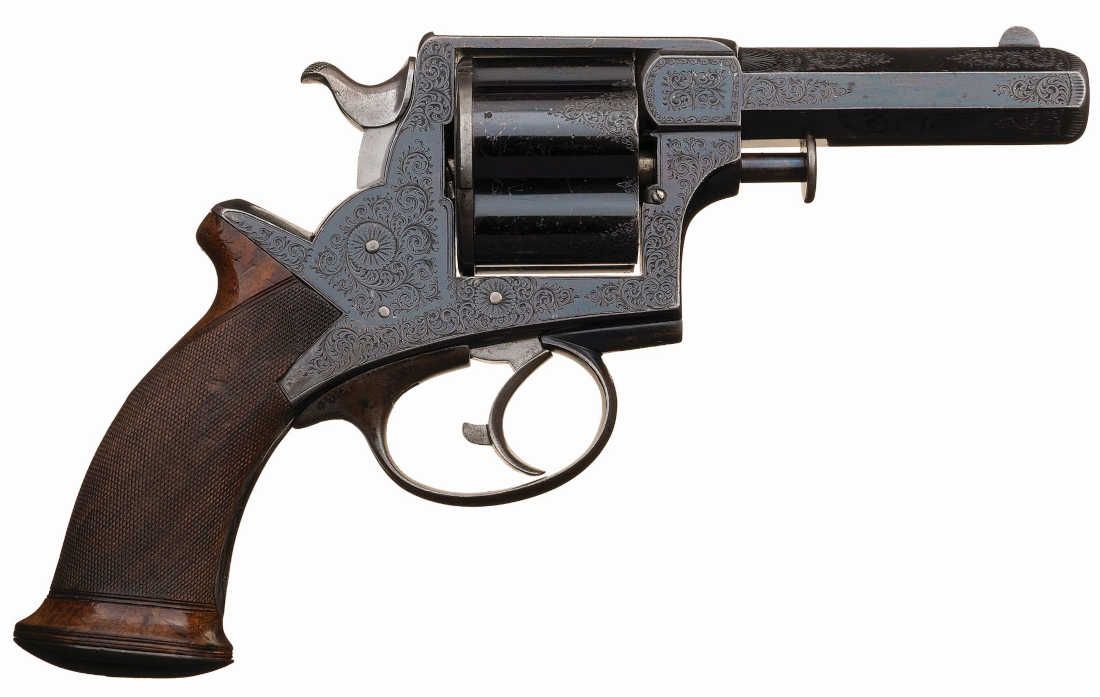By: Friedrich Seiltgen
Copyright © 2022
Born in Oldbury, England in 1816, William Tranter, like so many other gun designers, was the son of a blacksmith. In 1830, he started his apprenticeship with the Hollis Brothers Firearms Co. Nine years later, with some startup money from an uncle, he would leave to start his own business in Birmingham, England.
Up until about 1853, Tranter produced about 8,000 Adams 1851 Revolvers under license. He then started producing the first of his double trigger, double action pistols built on the Adams frame. On the double trigger guns, the second trigger located below the trigger was used to pull the hammer back and rotate the cylinder. The gun was fired by pulling the upper trigger. If you were in a hurry, both triggers could be pressed simultaneously to fire in double action mode.
Tranter pistols were well known for their quality and served the Confederate States of America during the Civil War, since firearm purchases from the north stopped. Tranter pistols were chambered in the popular calibers used in England and then .44 Army & .36 Navy for U.S. bound pistols. One of them chambered in .44 Army was owned by Confederate General JEB Stewart!
The Tranter was a cap and ball pistol and was produced even after the Civil War as many people thought these were safer than those new cartridge guns, but in 1863, William received the patent for rimfire pistols in England, and in 1868 he started production on centerfire guns.
One of the unique pistols Tranter developed was the .577 Manstopper. At the time of its design, the .577 Snider rifle was in use and well respected. The .577 Snider cartridge was cut down to create the .577 Tranter round. The .577 propelled the 400 grain bullet at a speed of 725 feet per second. The cartridge was designed with low velocity, but large mass.
Initially designed for British serviceman stationed in the faraway lands of the British Empire like India and Africa, the Manstopper was created to deal with large threats, whether on two legs or four.
In 1867, Tranter expanded his operations once again and received a contract from the British army for .450 caliber pistols for use during the Zulu War.
Tranter would retire in 1885, and the firm was sold to George Kynoch, who drove Kynoch Gun Works into the ground in a few short years. Tranter passed away in 1890 with a legacy of 24 firearms patents and 19 cartridge patents.
That’s all for now folks! Please keep sending in your questions, tips, and article ideas. And as always – “Let’s be careful out there.”
Friedrich Seiltgen is a retired Master Police Officer with 20 years of service with the Orlando Police Department. He conducts training in Lone Wolf Terrorism, Firearms, First Aid, Active Shooter Response, and Law Enforcement Vehicle Operations in Florida. His writing has appeared in RECOIL, The Counter Terrorist Magazine, American Thinker, Homeland Security Today, and The Journal of Counterterrorism & Homeland Security International. Contact him at [email protected].

